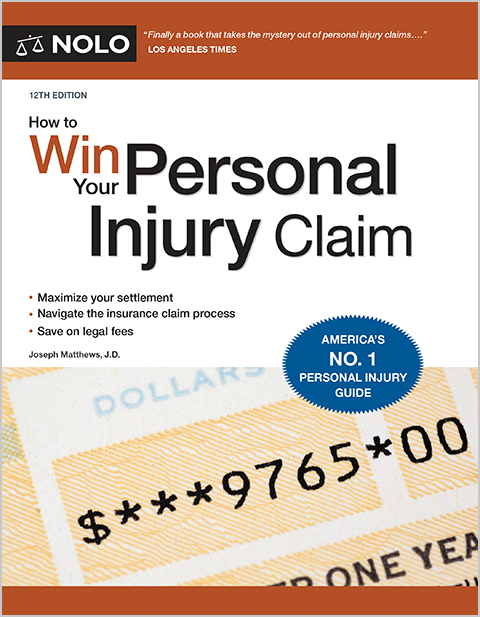False imprisonment is an intentional tort that happens when you're detained against your will.
False imprisonment happens when someone intentionally restricts your freedom of movement without your consent and without a legal defense. Depending on state law, it can be both:
- a misdemeanor that ends in jail time or a fine, and
- an intentional tort—a deliberately wrongful act that causes harm—for which you can collect damages (legalese for "compensation").
We describe the elements of a false imprisonment claim, explain how the intentional tort of false imprisonment differs from the crime of false imprisonment, and distinguish false arrest and kidnapping, two similar offenses.
The Elements of a False Imprisonment Claim
The specific elements for a false imprisonment claim depend on state law. In general, though, a viable claim requires showing that you:
- were intentionally restrained in a confined area
- were aware of being restrained, and
- didn't consent to the restraint.
Finally, there's no false imprisonment if the person who held you has a defense to your claim.
False Imprisonment Sample Facts
As we review the claim elements, we'll refer to these hypothetical facts.
A robber sticks up a convenience store at gunpoint. During the crime, the robber orders the store clerk and several customers to lie face down on the floor, threatening to shoot them if they try to escape. Fearing for their lives, they do as they're told.
Intentional Restraint of a Person
In most states, the first element—intentional restraint of a person in a confined area—doesn't have to involve the use of force. A credible threat of force, whether expressly stated or implied, is enough. The key question is whether a reasonable person would believe they're being held against their will. If so, this element should be satisfied.
In our hypothetical, the clerk and customers were deliberately held in the store under threat of being shot. They reasonably believed they weren't free to leave. The first element is satisfied.
Awareness of Restraint
The person being held must have been aware of the restraint when it happened. Most often, this isn't a problem. It can be an issue, though, when a person can't perceive or understand their circumstances. Someone who's intoxicated or injured to the point of unconsciousness, for instance, won't know they're being restrained.
Returning to our hypothetical facts, the clerk and customers all clearly knew they were being restrained as it happened, satisfying the awareness requirement.
Without Consent
If the person being restrained consents to it, there's no false imprisonment. But consent must be freely given. Consent that's coerced or given under duress is invalid. Consent (or lack of it) can be expressed, or it might be implied based on the circumstances.
In our example, a court would have no difficulty finding that neither the clerk nor the customers consented to be held at gunpoint. The second element is met.
Defenses to False Imprisonment
As with the elements, defenses to a false imprisonment claim vary a bit from state to state. Here are some of the most common.
- Lawful arrest. A lawful arrest by police justifies reasonable restraint.
- Shopkeeper's privilege. In most states, a retailer who has a reasonable suspicion that someone committed a crime—like shoplifting—can hold the suspect for a brief time.
- Consent. As mentioned above, voluntary consent defeats a claim of unlawful restraint.
None of these defenses would apply to our armed robbery facts. Because all the elements are met, the clerk and customers have viable false imprisonment claims against the armed robber.
More False Imprisonment Situations
Any facts involving nonconsensual confinement without a legal defense can turn into a false imprisonment case. Here are a few more common fact patterns:
- locking someone in a room or building against their will, with no reasonable means of escape
- confining a suspected shoplifter in a locked office for an unreasonable length of time
- health care workers physically or medically restrain a patient without a doctor's order
- restraining someone by making threats of death or physical violence against their spouse or children, and
- taking someone's car keys and threatening physical attack if they try to get away.
How Is the Crime of False Imprisonment Different?
Here are three important differences that distinguish the crime and the tort of false imprisonment.
Different Parties Bringing the Case
A tort lawsuit is a civil case brought by an injured plaintiff—an individual who says they were hurt by being wrongfully confined. A criminal case is brought by the state, typically through a county or city prosecutor..
Different Standards of Proof
In a tort lawsuit, the plaintiff must prove that the defendant is liable (legally responsible) by a standard of proof called "preponderance of the evidence." Under this standard, the plaintiff wins if they prove it's even slightly more likely than not that the defendant's wrongful behavior injured the plaintiff.
In a criminal case, the prosecutor must prove the defendant's guilt "beyond a reasonable doubt." This is the highest standard of proof in the law. It's sometimes described as requiring proof of guilt to a moral certainty, but not an absolute certainty.
Different Penalties
Someone who's liable for the tort of false imprisonment most likely will have to pay personal injury damages—medical bills, pain and suffering, and lost wages, for instance—to the victim. The penalties in a criminal case, of course, can be much more severe: Prison or jail time, fines, and maybe restitution to crime victims.
False Arrest and How It Differs From False Imprisonment
False arrest is another intentional tort that can also be a crime. The elements of false arrest and false imprisonment are pretty much identical, but with one key difference. In a false arrest case, the plaintiff is arrested under a claim of legal authority. In other words, false arrest begins with the act of an arrest, but false imprisonment simply begins with confinement.
What does a "claim of legal authority" mean? It means, for instance, that a police officer made an arrest thinking there was probable cause to believe the suspect committed a crime. If it turns out there wasn't probable cause, and if the other elements of false arrest are present, the wrongly arrested suspect might have a false arrest lawsuit.
Here's another way to look at it: All false arrest claims are also false imprisonment claims. But not all false imprisonment claims are false arrest claims.
Why? Because not all false imprisonment claims start with an arrest. Think back to our convenience store robbery facts. They meet all the requirements for false imprisonment. But the restraint didn't involve an arrest based on legal authority, so there couldn't be a false arrest.
Is False Imprisonment the Same as Kidnapping?
As a rule, no. Kidnapping involves confinement without consent, but it often requires an additional, critical element: Movement. Simple confinement—meaning false imprisonment—generally turns into kidnapping when the kidnapper moves the victim, even a short distance. Also, kidnapping is a felony, not a misdemeanor.
Check your state law to see how the elements of kidnapping differ from those of false imprisonment.
Get a Lawyer to Help With Your False Imprisonment Case
If you think you were falsely imprisoned, you might wonder if you've got a case. The elements of false imprisonment are easy to recite, but applying them to a real-life facts can be a challenge. Think about hiring an experienced personal injury lawyer to guide you through the process.
Here's how to find a lawyer near you who's right for your case.


